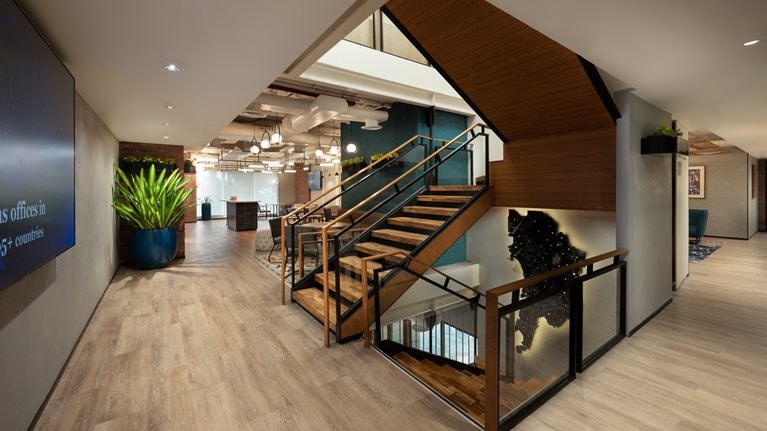McKinsey’s presence in India has grown and changed with the country. We opened our first office there in 1992, in what was then Bombay, as the country’s economy opened up. The expansion of our work, in hand with growth in India’s economy, led to office openings in Delhi, Chennai, and Bangalore, India’s tech capital. But the latest change in our physical presence in India is one of innovation in addition to expansion, with a new Mumbai office opening in early July.
When it came time to expand our footprint in Mumbai’s burgeoning financial and business district, Bandra Kurla Complex, our Mumbai office managing partner Kanika Kalra knew it had to be a space that reflected the drastic changes in work brought about by COVID-19. McKinsey Global Institute’s The future of work after COVID-19 report found that the bar for the appeal of an office had gone up dramatically since the pandemic.
“We started designing this office during the pandemic, and we were sure work would not be what it was before,” Kanika says. “The office would have to be a special place that fosters a sense of belonging to a larger organization.”

The space is spread over six floors of an office tower, each with its own theme, brought to life through artwork—all made by Indian artists, such as a map of Mumbai made of computer keys, and natural design elements such as a fishpond. The materials were largely sourced within India, including Athangudi (native to the Chettinad area of Tamil Nadu) tiles in the second-floor bistro and Indian motifs on the carpets.
“We wanted to encourage people to move around, to explore,” says Kanika, “to incorporate a sense of journey into an office day.”
Ishita Kayastha, associate partner in Mumbai, was slow to return to the office as the pandemic eased, but the opening of this new office changed her outlook. “It’s just so bright and vibrant, with lots of sunlight,” she says. “The various themes, seating, colors; we get to explore different moods and sides of ourselves depending on what we want.”
The underlying goal of creating an in-office journey worthy of journeying to is to build and strengthen connectivity among employees. “Work happens no matter where you are,” says Kanika, “but collaboration and the elevation of work doesn't. So, this is all about making that magic of collaboration.”
As employees make their way through workspaces and floors, from the couch to the café to the roof, they might strike gold and catch a chance to pick someone’s brain who they’d normally not have reason to set up a meeting with. Ishita says she’s received impromptu help from firm experts a few times this way.
“It’s different than just running into someone in a hall or an elevator. The space encourages you to talk,” Ishita says. “I can feel the increase in energy and feeling of connectedness between teams.”
It really came together with this new office, which became a natural center of gravity to gather people together around shared senses of purpose and meaning.
Staff have also been proactive about building connectivity. Shivanand Sinha, a partner in Mumbai, helped set up the Mumbai chapter of Fab Clubs, a dozen activity groups for employees with common interests, such as hiking, films, biking, board games and music, and attributes their success to the office.

“We had the idea to do something like this to encourage people to come back after COVID, but it was slow to start,” says Shiv. “It really came together with this new office, which became a natural center of gravity to gather people together around shared senses of purpose and meaning.”
McKinsey is currently not requiring employees to come into the office daily, giving people the freedom to create work conditions that work best for them. The challenge for many companies using remote and hybrid models is to blend this freedom with the cohesion attained by physical gatherings. Kanika believes rethinking the office is key and likens this new era to how workplace attire has evolved.
“There used to be formal wear and casual wear and then this wonderful mix of the two that evolved from the tech revolution,” she says. “I think now there’s the office, there’s home, and there’s a little mix of the two that is happening, something warmer and more comfortable to be at.”